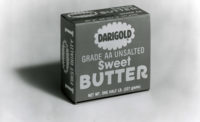Strong global demand and some supply hiccups helped dairy markets recover in 2010, but panelists at USDEC’s fourth annual “Global Dairy Outlook” webinar Nov. 16 said the key questions for 2011 are whether demand can be sustained at higher price levels and how strongly milk production responds.
At the event, which drew nearly 300 live listeners from 17 countries, moderator Marc Beck, USDEC’s senior vice president of export marketing, suggested that benchmark commodity whole milk powder prices would trade in a band between $3,500 and $4,500 per ton next year, a price “that’s shown to be sustainable on the demand side and a price that is needed to sustain production growth and production profitability out of the market leader in Oceania.”
While rising food inflation posed a risk to demand in the year ahead, Jon Hauser, editor/publisher of Xcheque.com, suggested that growing wealth in developing countries was enhancing buyers’ ability to pay.
Historically, dairy prices in Asia have been depressed versus the Western world, largely due to export subsidies, says Hauser. With those subsidies removed, “the question is whether we are seeing food inflation or seeing the rest of world more able to afford dairy at prices that the Western world is used to paying.”
Other panelists weren’t ready to concede the notion that a higher price threshold would prevail.
“I tend to wonder if that’s really a sustainable price,” said Dalyn Dye, president and CEO of Hoogwegt U.S., Libertyville, Ill. “I wonder whether the amount of milk that might be produced when that kind of price translates back to farmers is really the amount of milk customers around the world can consume.”
Added Phil Plourd, president of Blimling & Associates, based in Cottage Grove, Wis: “I am inherently skeptical of ‘paradigm shifts’ in any overarching sense. Price always matters. And it is easy to underestimate supply-side response. I am intrigued, however, at notions that the developing world is better able to absorb higher prices than the developed world. Countries such as China have cash. They need to keep the people fed. Still, bubbles are bubbles. We are not there yet, in my estimation. But I can see how we get there.”
Continued buying from China would be key to how the 2011 markets unfold, speakers agreed. They’ll also be keeping their eyes on New Zealand weather and how quickly high-feed costs curtail milk production in the United States and Europe. Based on recent supply growth, panelists foresee softer conditions in early 2011 giving way to tighter markets later in the year.
To view an archived version of the Nov. 16 presentation, covering issues of price elasticity, global milk supply, currency exchange rates and more, including the presentation of the “Tom Camerlo Exporter of the Year Award” to United Dairymen of Arizona, which was featured inDairy Foods’ November State of the Industry report, go to www.usdec.org.
USDEC's 2011 Dairy Outlook: Are Higher Prices Sustainable?
Looking for a reprint of this article?
From high-res PDFs to custom plaques, order your copy today!





